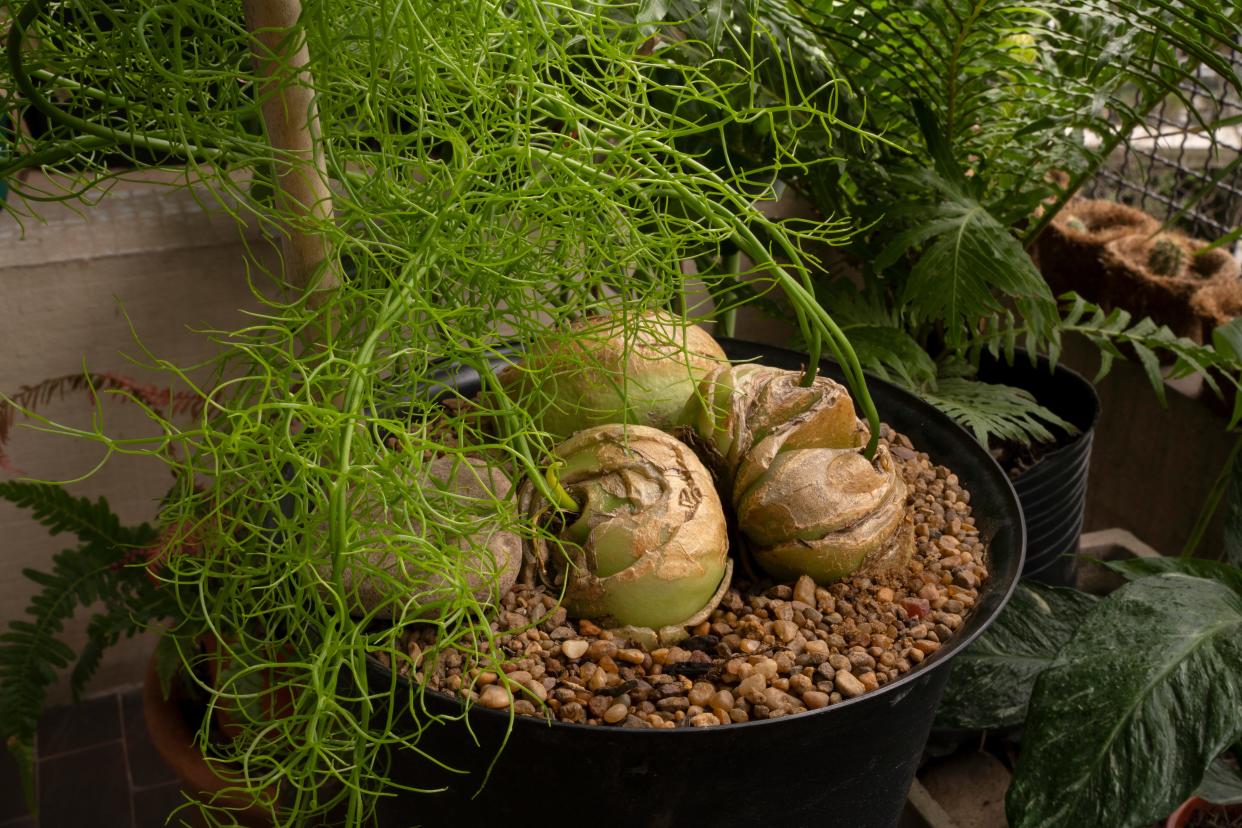CHARLES REYNOLDS: Some onions highly toxic

In the hands of an adept cook, onions are mighty tasty. But a few plants called onions aren’t tasty: They’re toxic. The pregnant onion — aka false sea onion — is one example and is usually cultivated as a conversation piece due to its name and reproductive habits. This variable plant is a floppy, strap-leaved South African species (Albuca bracteata) that displays impressive clusters of greenish-white flowers in spring and summer. Plants grow from a 4-inch-wide, above-ground bulb that — as it matures — develops bulblets on its side that eventually drop off and root. All parts of this hardy member of the hyacinth family are toxic, though the bulb is particularly poisonous. Provide sunny, well-drained sites. Note: In some catalogs the species is still listed under the old botanical name of Ornithogalum caudatum. Bulbs are available online.
The climbing onion — aka glass onion — is similar in many respects: It’s native to South Africa, grows from an above-ground bulb and is highly toxic. The plant’s appearance is radically different, however, with thin, twining and branching flower stalks replacing foliage. Bulbs can grow up to 8 inches across and often produce flower stalks throughout the year, so many specimens are never completely dormant. Climbing onion (Bowiea volubilis) is suitable for sun or indirect light and can be grown in pots fitted with a small trellis, or their airy stems can be allowed to dangle. The flowers are tiny and develop infrequently. Mature bulbs tend to produce offsets. Bulbs are available online.
ARE FICUS PLANTS POISONOUS?
Ficus plants — including Benjamin fig, fiddleleaf fig and rubber plant — are common houseplants, but their white, latex-like sap often prompts folks to wonder if they’re toxic. They are – though the sap of most of the 800 or so Ficus species causes nothing more than skin irritations. Dogs and cats that chew the foliage, however, can suffer intestinal problems such as vomiting.
HARDY BAMBOO PALM
Hardy bamboo palm is a clustering, 8-foot-tall species (Chamaedorea microspadix) that revels in moderate shade on organically improved, mulched sites. Cold hardy at least to the low 20s, this sturdy palm has reed-like stems topped with dull-green pinnate leaves up to 2 feet long. Cream-colored flowers appear on drooping inflorescences, and — on female plants — are followed by dangling clusters of quarter-inch orange fruit. The seed within each fruit — which can be irritating to skin — germinates erratically over a period of months. Growth is fairly rapid. Be sure to purchase plants or seeds of hardy bamboo palm, not bamboo palm (C. seifrizii), which is a fine houseplant but less appropriate for the landscape.
MAKE CUT FLOWERS LAST LONGER
The simplest way to lengthen the life of cut flowers is with a mixture of two tablespoons of white vinegar and three tablespoons of sugar in a quart of water. Change the water every two or three days.
This article originally appeared on The Ledger: Know your onions

